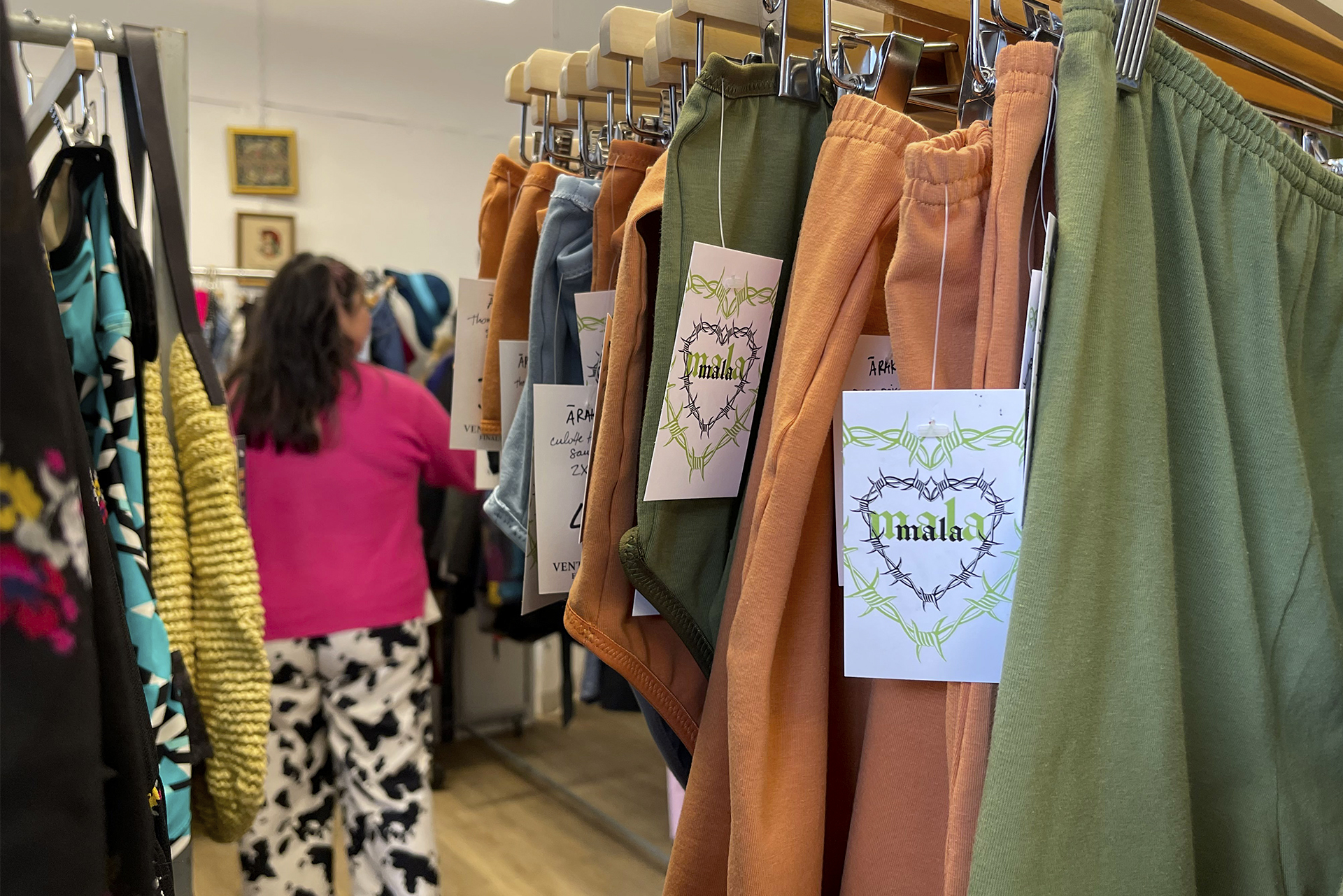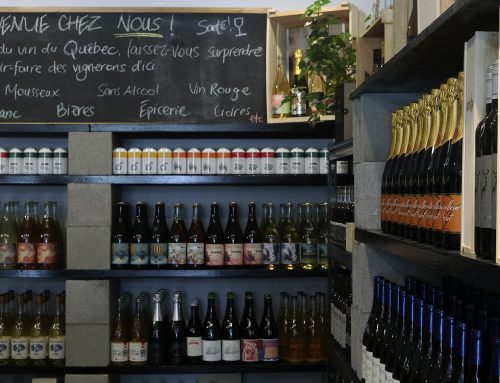BY Alexa Toguri-Laurin & Dorothy Mombrun
Plus-size content creator Kimiko Martone dedicates her posts based on outfits she thrifted or bought from environmentally sustainable fashion brands. Since pursuing her social media career, Martone says the brands who claim to be sustainable do not offer sizes for people like her.
“When you go to their websites, they only sell clothes from extra-small to large. Extra-large if I’m lucky,” Martone said.
‘Sustainable fashion’ and ‘slow fashion’ continue to be buzzwords in the fashion industry, commonly associated with paying garment workers fair wages, and reducing carbon emissions, contamination and water usage.
According to TikTok, posts tagged under #SustainableFashion gained a total of 3.9 billion views by early 2023. However, most brands don’t serve all sizes. Additionally, most of these brands aren’t accessible in terms of marketing exposure, distance, and price.
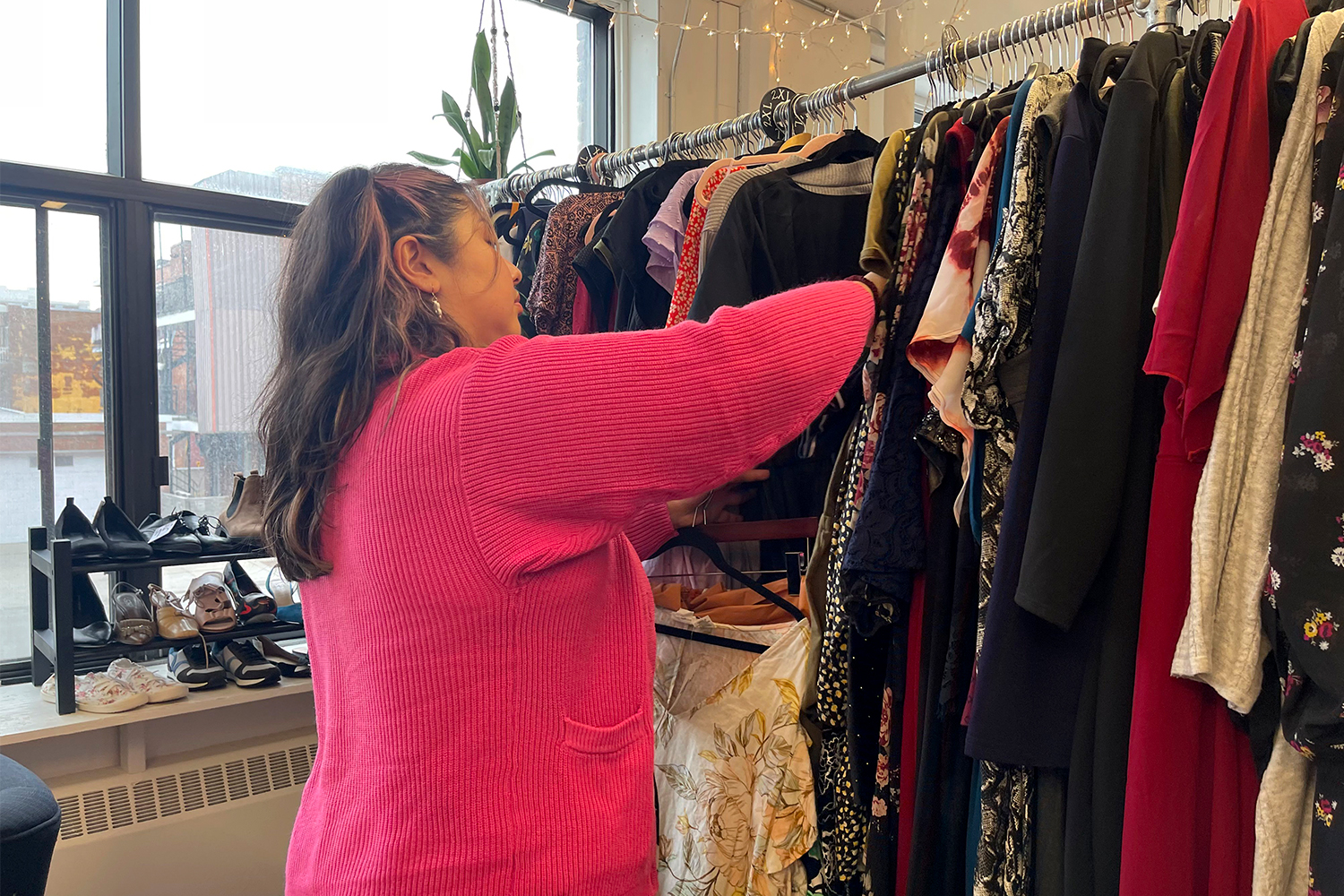
Plus-size content creator Kimiko Martone looks through clothing racks at Mala. Photo by Alexa Toguri-Laurin.
Although some fast fashion brands carry sizes from XS to 3XL, Martone says the quality of mass-produced garments and stitching don’t meet the same standards as an ethically made one.
“These [fast fashion] brands see you as a number, not a person. I noticed that some fast fashion brands just don’t fit your body properly,” says Martone. “They don’t know how to sew clothes for certain plus-size women. Even if they are expanding their size range and being more inclusive, they just think that enlarging all their garments from small to large is the same thing as going from a XL to a 3X.”
Sandra Muñoz-Diaz owns Mala, a vintage clothing boutique in Montreal. Mala sells clothes from second-hand dealers and local sustainable suppliers at affordable prices. When Mala started in Dec. 2021, Muñoz-Diaz had trouble finding pieces that are both fashionable and ethically produced nearby.
“Even if you want to go ethically and buy, let’s say, a simple black dress, you don’t have a lot of choices for plus size,” she says. “Just to find designers that go up to, let’s say 4X-5X, is very difficult to find online, in Montreal and in-person is even more difficult. It’s a struggle. So, in the store we have plus size brands that sell plus-size underwear only, I don’t have other brands.”
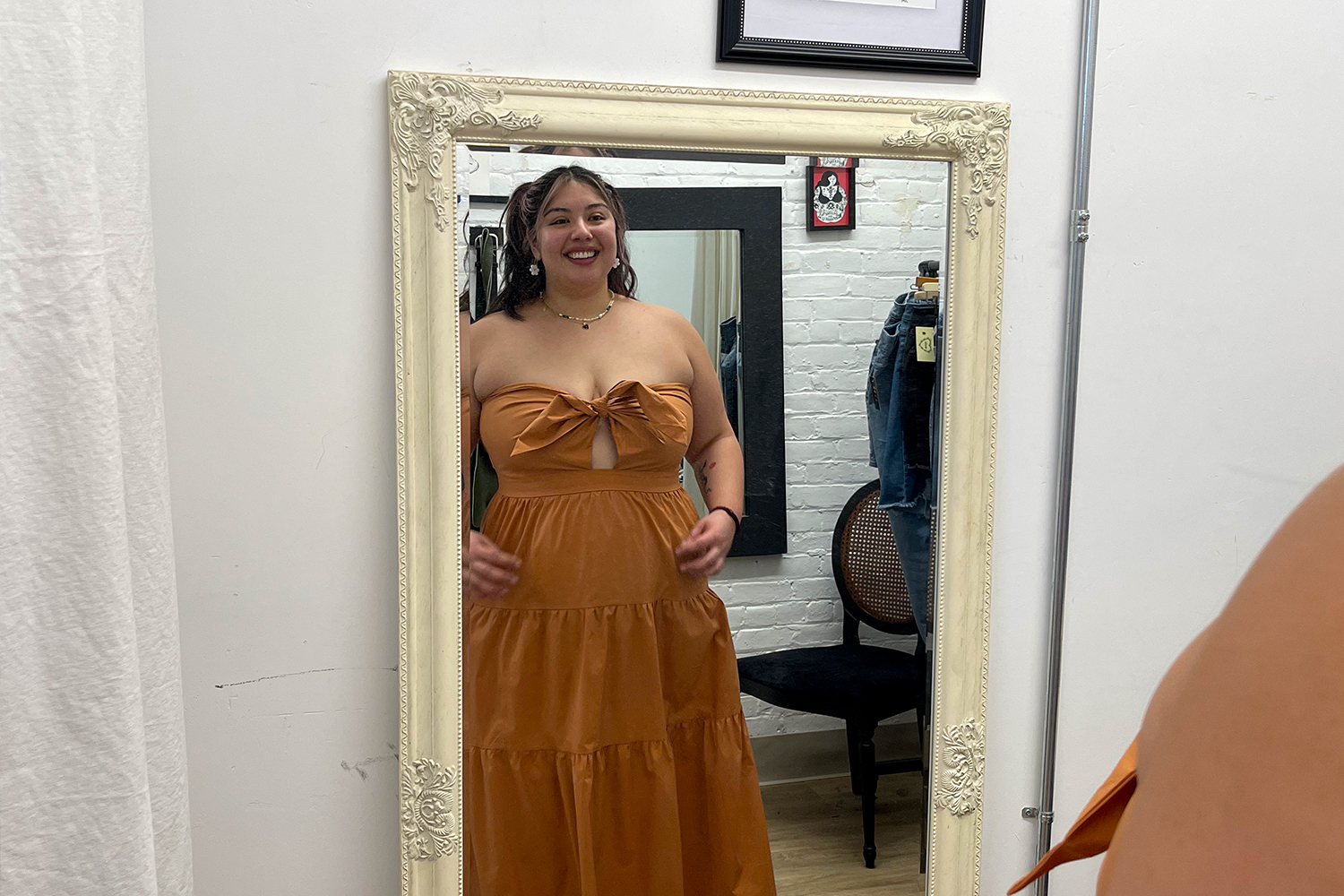
Plus-size content creator Kimiko Martone tries on a dress at Mala. Photo by Alexa Toguri-Laurin.
While sustainable fashion grows by 8.3 per cent annually, plus-size fashion retailers are expected to increase by 5.7 per cent by 2023.
Although the average American woman weighs around 170 lbs and wears clothing sizes large to extra large, less than 20 per cent of sustainable fashion brands provide large sizes.
Ethan Sawyer from the Fashion Institute of Technology specializes in fashion advertising and designer marketing. He says fast fashion brands carry a wider range of sizes due to the speed of production and demand for new clothes, especially when viral fashion trends are involved.
“That’s probably a production line [issue], it comes in the name, ‘fast fashion.’ So, they have production lines built around creating a new type of garment every week and then getting it distributed the next week,” Sawyer explains.
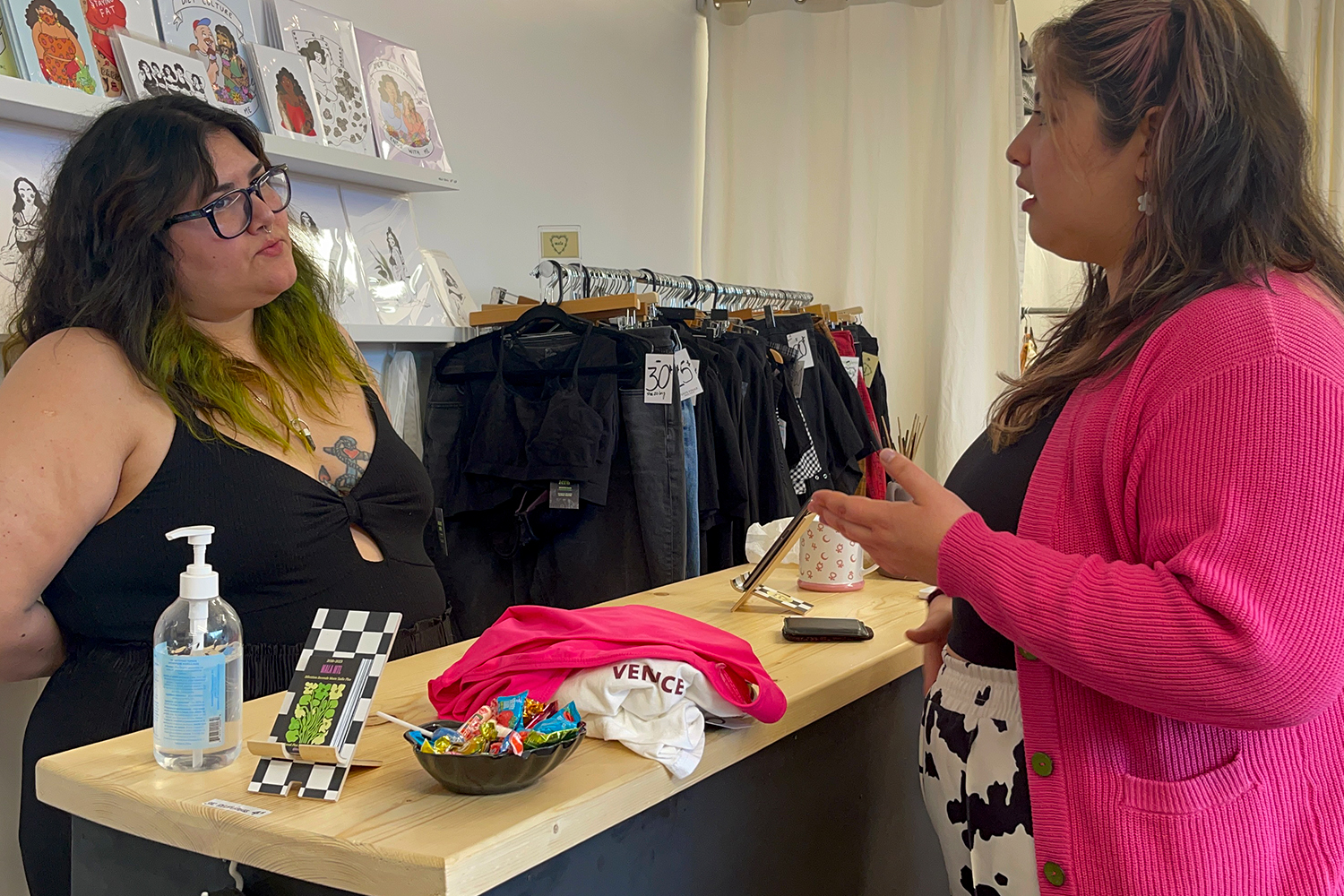
Owner of Mala Sandra Muñoz-Diaz has a conversation with Kimiko Martone at the cash. Photo by Alexa Toguri-Laurin.
Another factor that contributes to the lack of interest in designing larger garments. The common phrase among fashion brands is “plus-size clothes don’t sell.” For Sawyer, that phrase might fall out of use if the importance of plus-size clothes are socially accepted.
“If there was maybe a huge movement to like buy plus sized items and then they sell out maybe like a jump start creating more and then up the percentage of, of plus sized items in sustainable fashion,” says Sawyer.
For Martone, she believes that term is fruitless to the current reality of shoppers. “People who say that plus-sizes won’t sell, I know for a fact that when I wanted to shop at Free Label and get their new Carrie Bras, all the XL, 2XL and 3XL’s were sold out,” she says.
Social media and fashion subculture: Video by Dorothy Mombrun.
Despite the hiccups in the sustainable fashion industry, brands such as Em & May offer custom sizing for their customers. To Martone, this gives hope for sustainable fashion brands catering to plus-size individuals.
“I think sustainability just adapts that mindset more of: ‘these clothes are made for you, you are not supposed to fit into these clothes,’” Martone says.
Martone hopes more brands will see the advantages of including more plus-size customers.
“If you don’t make plus-sizes, you miss a huge market of people who are willing to buy your clothes,” she says.
